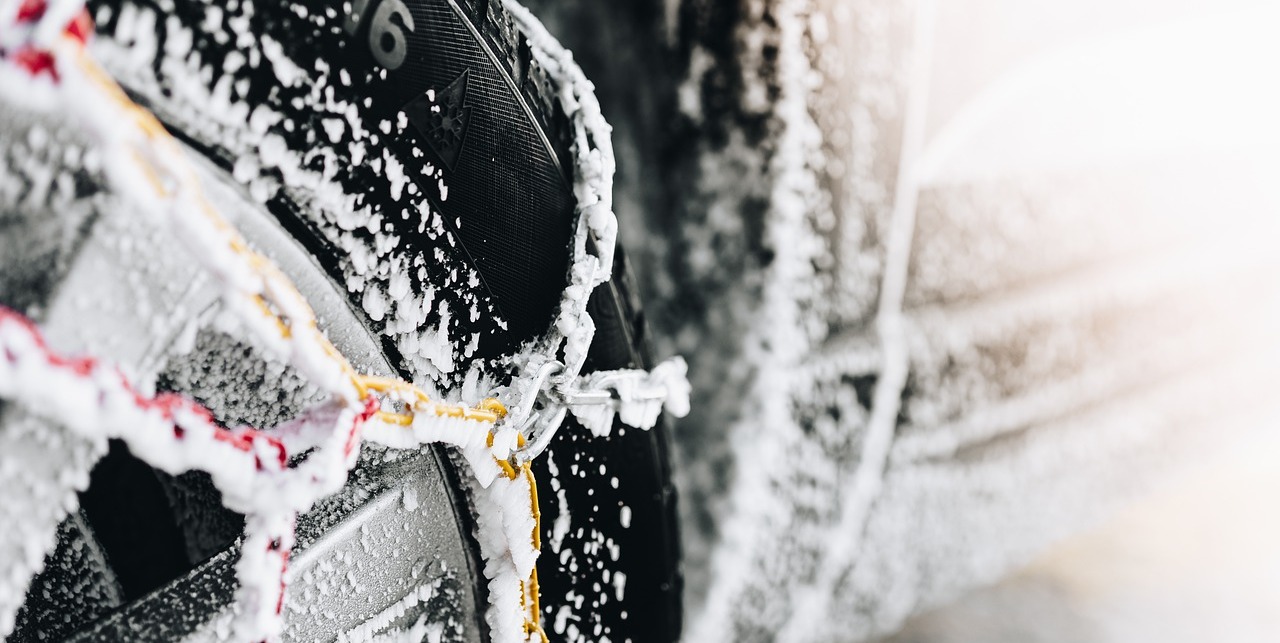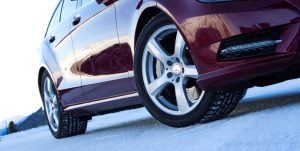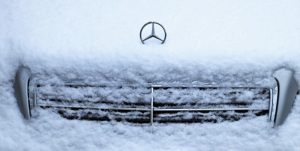Snow chains are an indispensable accessory for thousands of drivers every winter. In some areas of the country, snow is present for many months of the year, an element that hinders the proper circulation of traffic, causing traction problems in most vehicles. For this reason, chains are vital and a complement that must travel in the trunk of your car most of the year.
However, chains, like snow, alter the behavior and response of the vehicle. This means that we will have to adapt to road conditions, cold and even ice. Fortunately, there are a number of practical tips that will allow us to learn how to drive with chains and all the tricks you need to know so that nothing can stop you when traveling during the winter with your new Mercedes.
7 tips for driving with chains
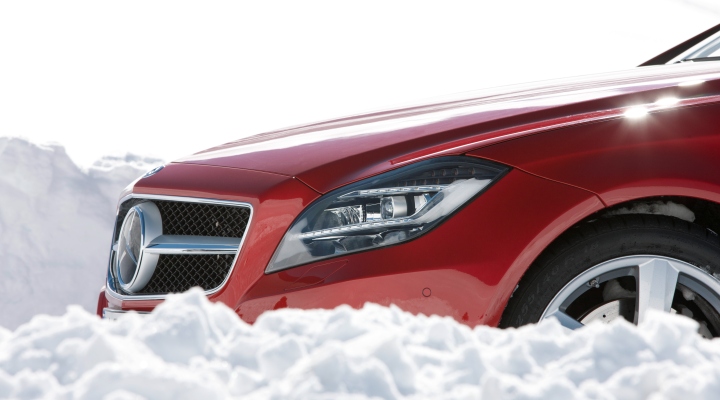
Chains are an element that provides the traction capacity that tires lose on snowy and/or icy surfaces. Their installation is simpler than it may seem, but there are a series of aspects that you should take into account when driving with chains. With these tips, you will ensure that your trip is efficient and totally safe:
Long marches
When driving with chains, do so in high gears whenever possible. When upshifting, the engine rpm drops and, therefore, acceleration is more progressive and smoother. This maximizes wheel traction and therefore the effectiveness of the chains. Also, avoid shifting gears whenever possible, so that the wheels do not slip.
Moderate speed

Just as we look for a smooth and progressive response from the vehicle, it is also important to maintain a moderate speed during the trip. By maintaining a constant speed, it is not necessary to accelerate or change the pace of driving. You will need to adapt to road and traffic conditions to choose a suitable speed, but remember that the higher the speed, the less grip the tires will have.
Smoothness with the steering wheel
The front wheels are responsible for guiding the vehicle in a particular direction. On snow and ice, steering response can be erratic and unstable, so when driving with chains it is important to treat the steering wheel gently. Avoid sharp turns and changes of direction, thus increasing the vehicle's stability and the traction capacity of the chains.
Progressive braking

Whenever possible, avoid using the brake. The key to driving with chains is to be steady and progressive in any maneuver. This also affects braking. If you act sharply on the brake pedal, this can lock the wheels, causing the car to slide. Also, never brake on the inside of a curve. If you must, always brake before reaching the curve, with the steering wheel straight and gently.
Circulates on other car brands
A tip that increases the effectiveness of snow chains is to ride over the marks left by other cars. These grooves in the snow will allow you to know exactly what is under the snow and to drive on a previously compacted surface. If you are forced to drive in snow without chains (which is not recommended), avoid the tracks of other cars, as compacted snow can turn to ice and cause loss of control of the vehicle.
Increases the safety distance

One of the tricks to driving with chains is anticipation. Anticipating any unforeseen event is essential for safe driving in any scenario, and this is achieved by increasing the safety distance. On snow, the distance to the vehicle in front should be greater than usual, at least twice as many meters. Remember to brake gently and avoid sudden changes of direction, so with the right distance you will have enough space to stop the car safely.
Caution and calm
Last but not least, exercise extreme caution when driving in snow. Avoid distractions at the wheel and stay alert at all times. In addition, you must be able to remain calm in the face of any unforeseen events and keep a positive mindset - we don't want anything to ruin our trip this winter!
When is the use of chains mandatory?
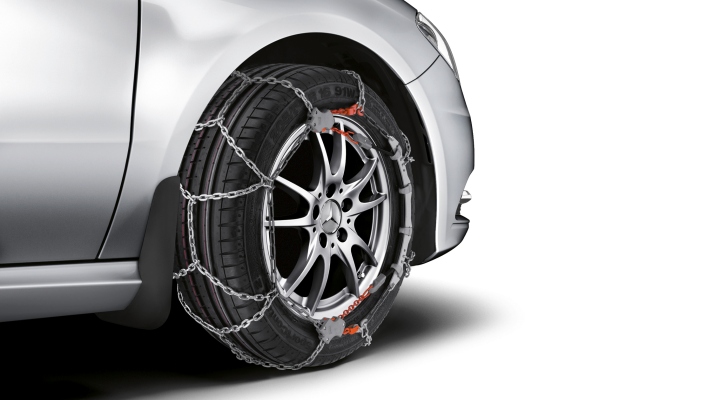
The use of chains is mandatory depending on the state of the road. The Dirección General de Tráfico (DGT) and the authorities of the Guardia Civil de Tráfico will determine from what point it is mandatory to drive with snow chains. Generally, their use is necessary whenever the driving wheels of the car skid when trying to move forward.
Traffic authorities will indicate by road signs or directly when it is mandatory to drive with chains. If you do not have at least one set of two snow chains, you will not be able to continue driving. Otherwise, if you drive on a surface without snow with chains, you will cause damage to the chains and tire as well as to the road surface, for which you may also be fined.
Where to put the snow chains?
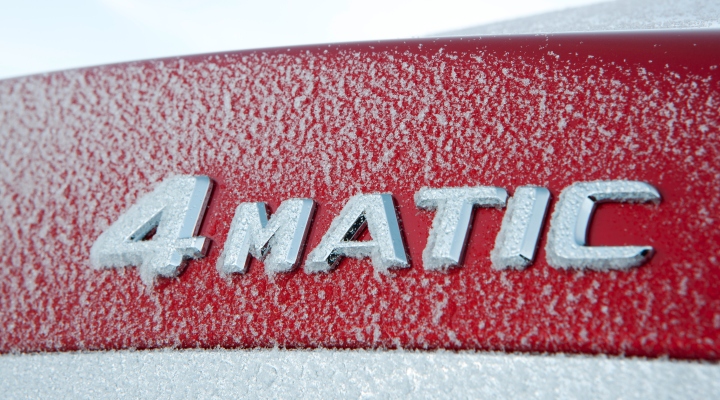
Chains must always be placed on the drive wheels, i.e., those that allow the vehicle to move forward. At this point, it is important to know which is the drive axle of your car, since, if it is a front-wheel drive vehicle, the chains will be installed on the front tires; whereas, if it is a rear-wheel drive car, the chains will be installed on the rear tires.
If a four-wheel drive system, such as Mercedes Benz 4MATIC all-wheel drive, is fitted, it is advisable to have chains for all wheels. If this is not the case and only one pair of chains is available, these will be installed on the front tires, since these are responsible for steering the vehicle and a greater load during braking.
An alternative to snow chains are winter tires. These special tires for driving on snow and ice will allow you to continue driving when the traffic authorities determine that the use of chains is mandatory.
What is the maximum speed for driving with chains?

There is no standard that determines the maximum speed at which chains should be driven. However, it is highly recommended that this speed should not be too high and should be kept constant at all times. This speed will depend on the traffic situation (whether it is heavy or not), and the adverse weather (snowfall, rain, fog banks...). For this reason, you should analyze the scenario and adapt your speed to the situation. One recommendation is to stay below 30 km/h with metal chains and 50 km/h with synthetic chains.
How to install snow chains on your car step by step?
Installing snow chains on your car is not a very complicated process, but it does require some practice. The process takes just a few minutes and is easier the more times you have done it. In the RACE video you will discover step by step how to put the chains on your car:
Don't forget to maintain your car in winter to make sure everything is in perfect condition. A regular check of the condition of the tires, braking system and suspension is essential for the cold months. In addition, a mechanical overhaul will prevent a possible breakdown this winter.
In Grupo Concesur we are Official Mercedes Benz Service with over 47 years of experience in the field of sales and after sales of Mercedes vehicles. We use only original spare parts and we have qualified experts in the maintenance and repair of Mercedes cars. Trust in a professional and experienced team to tune up your vehicle this winter.

